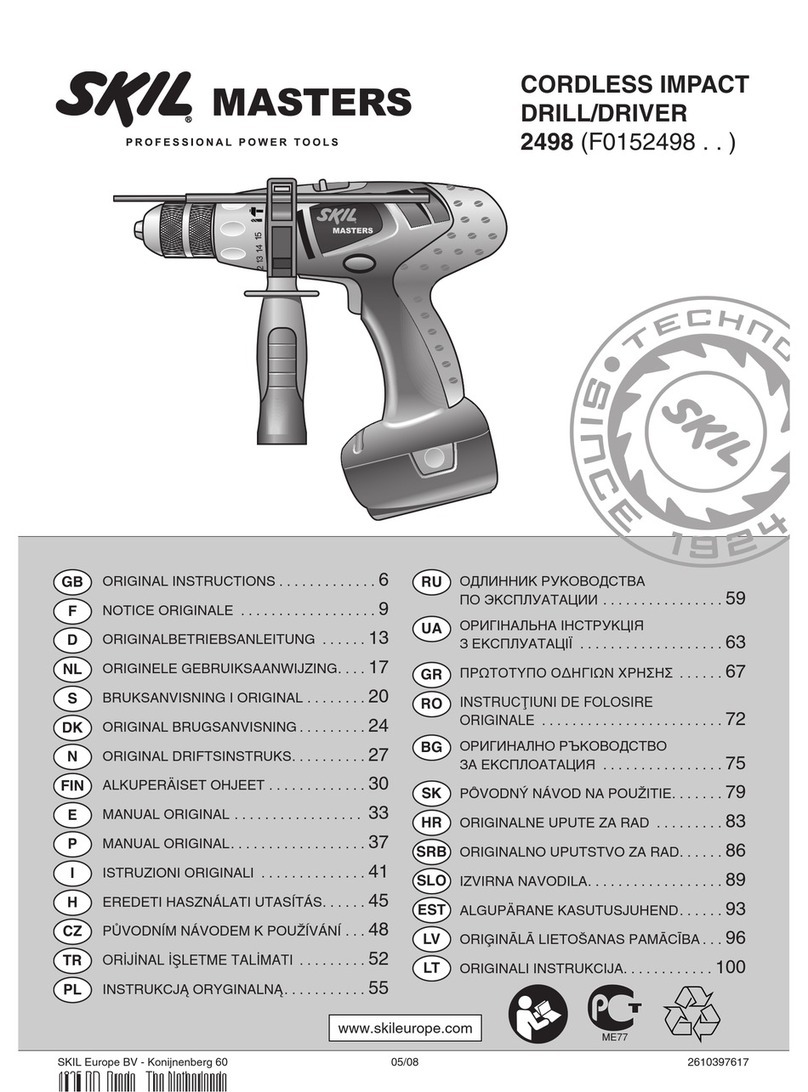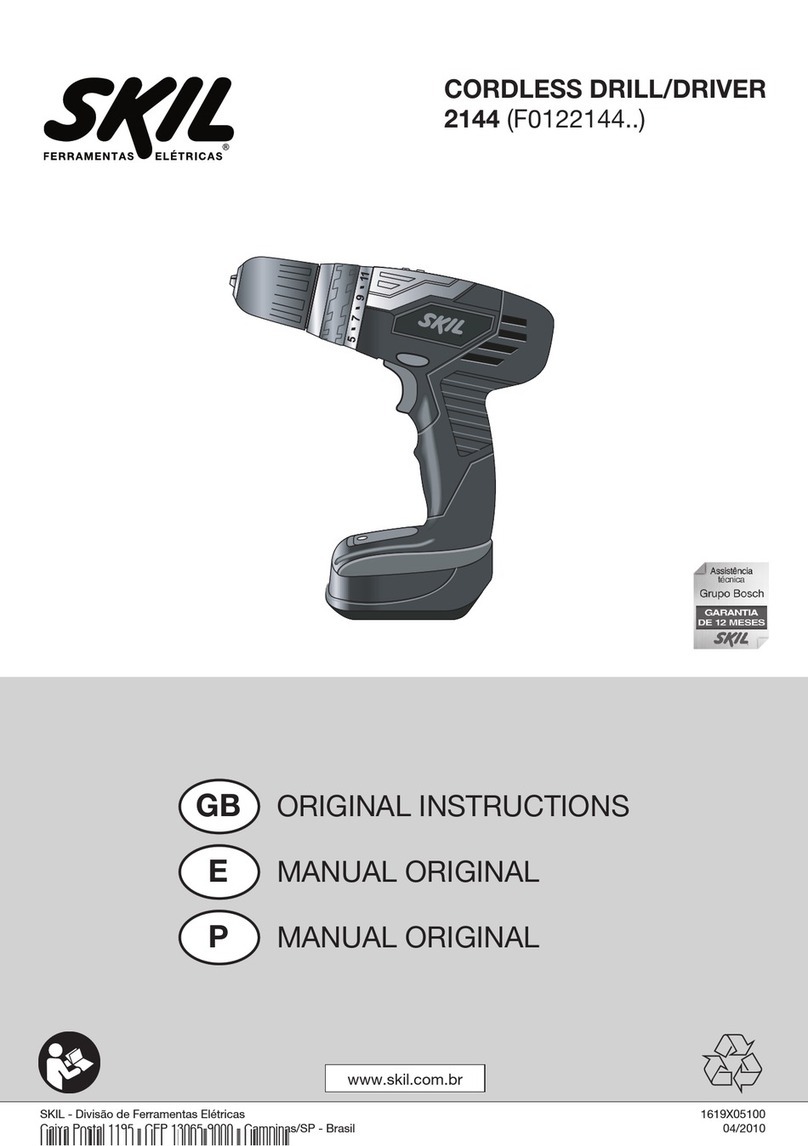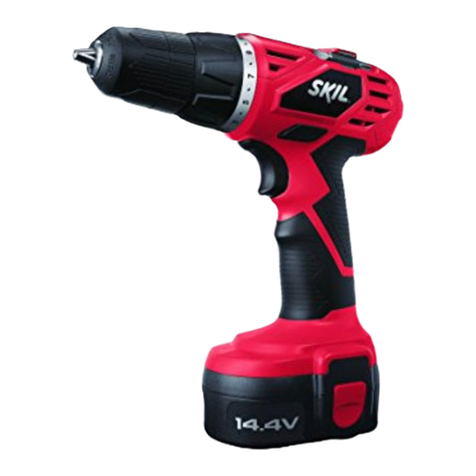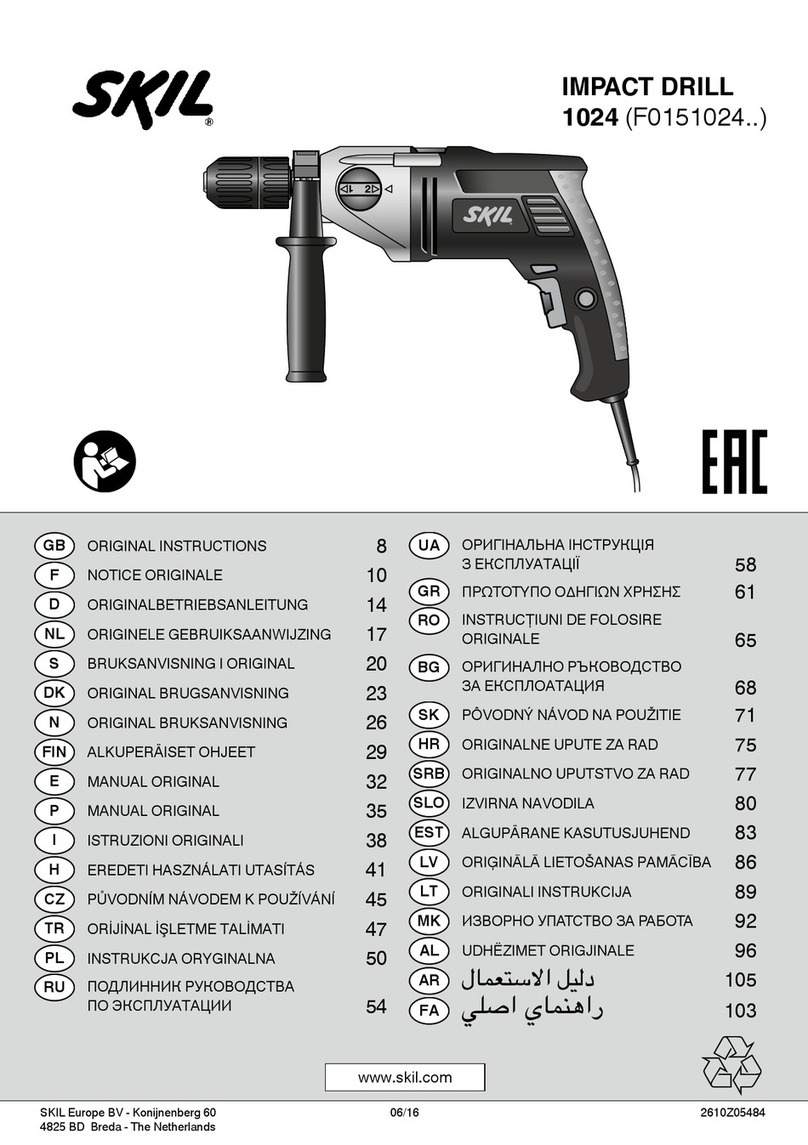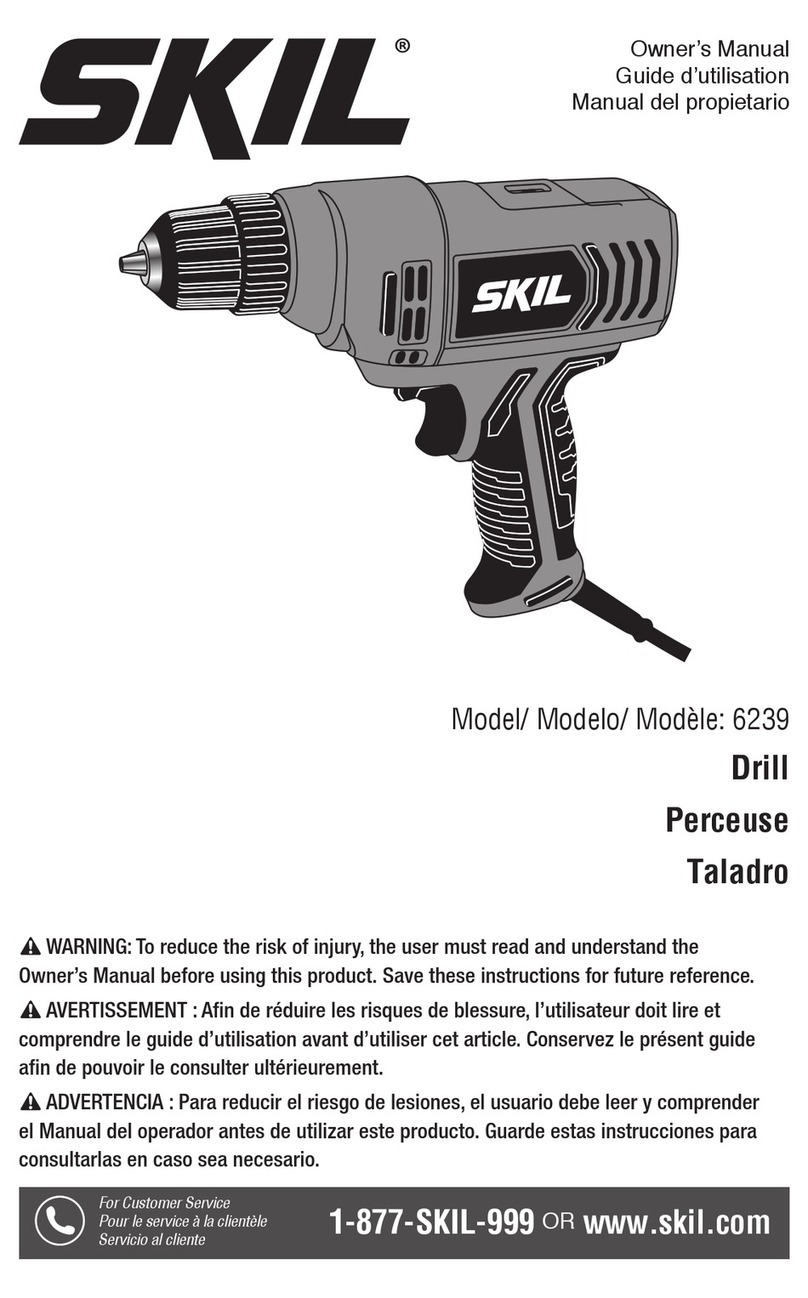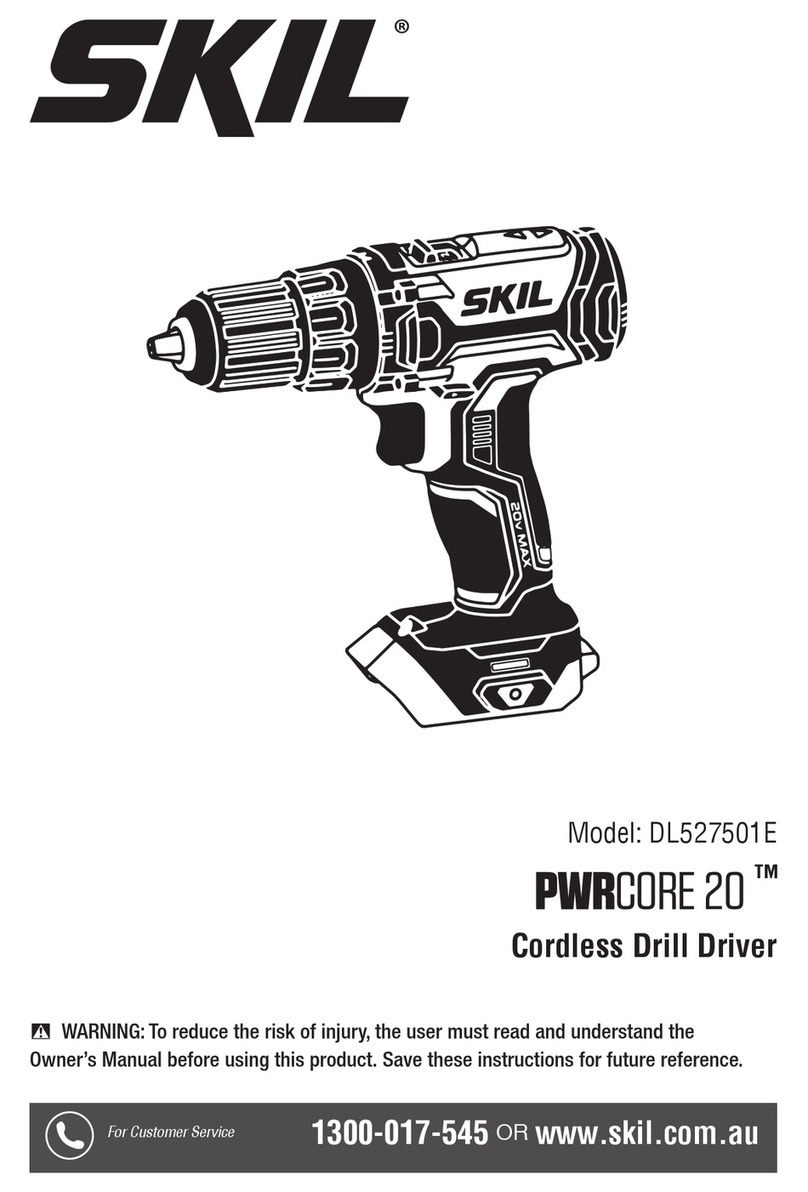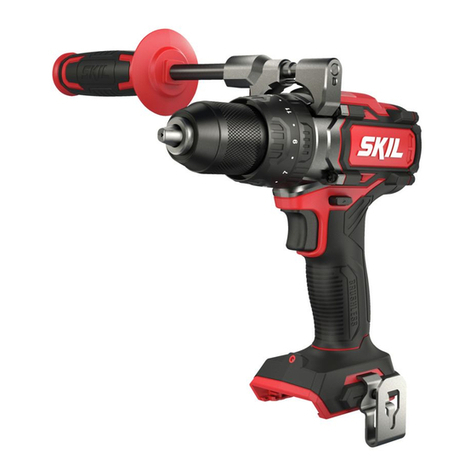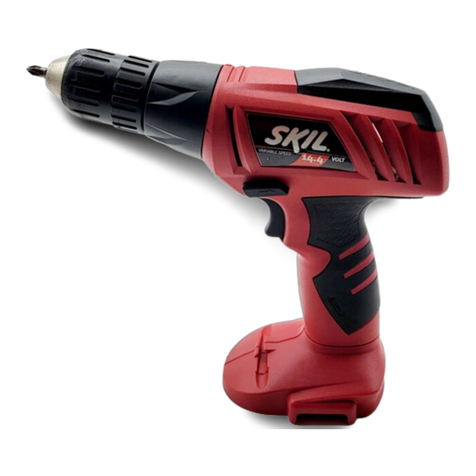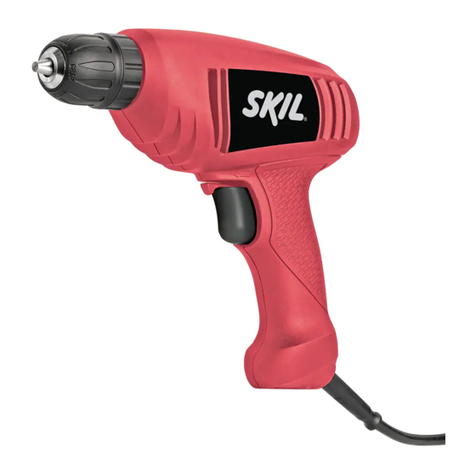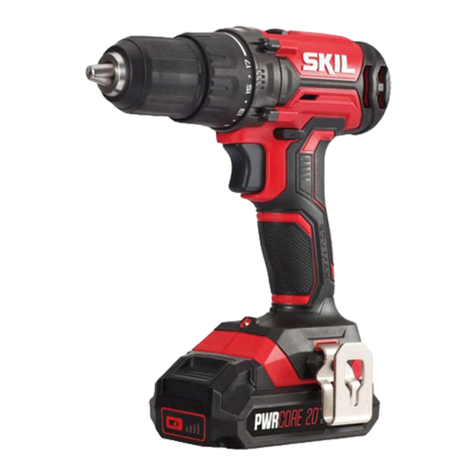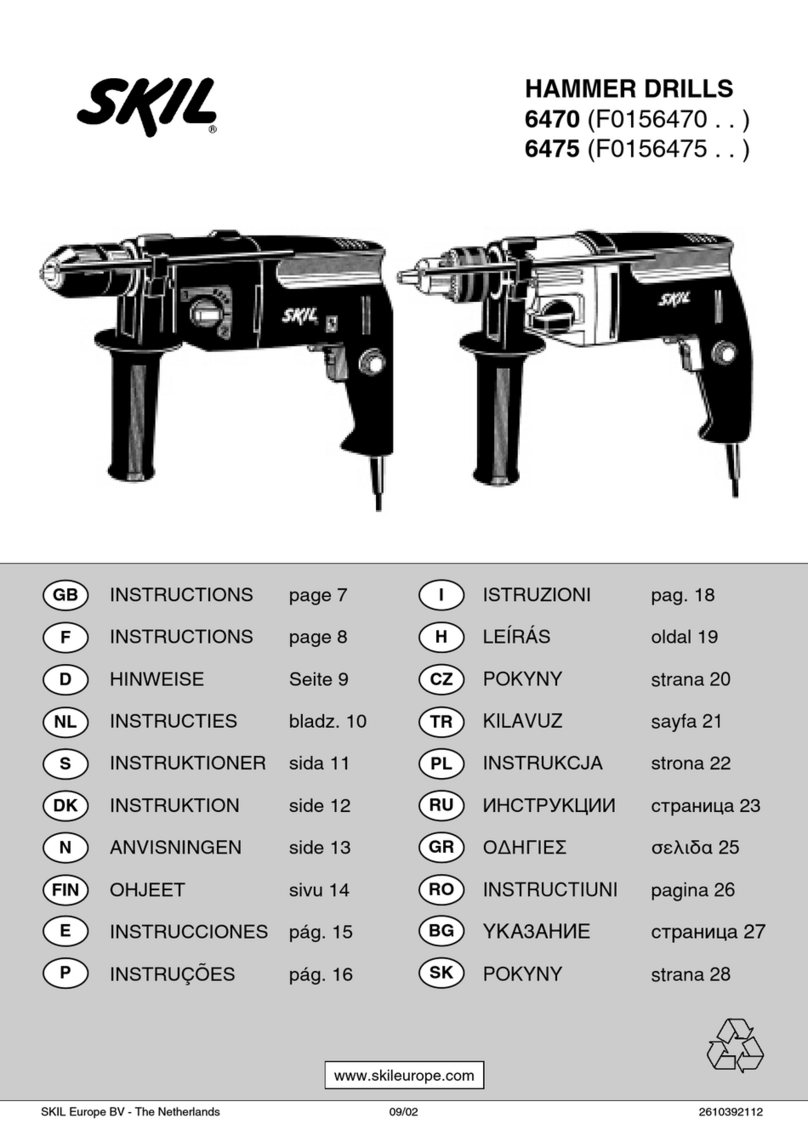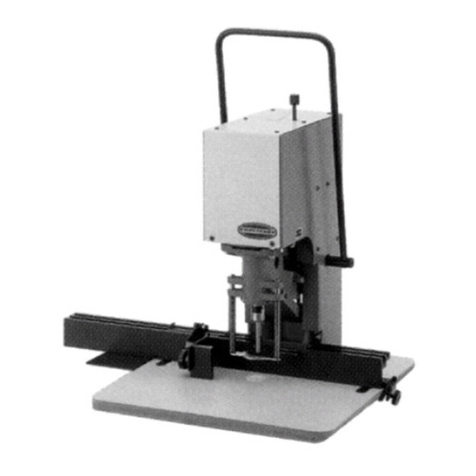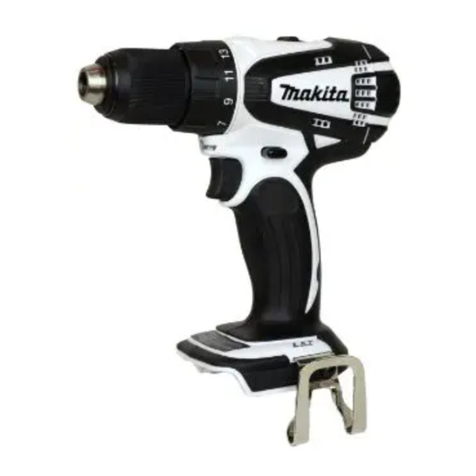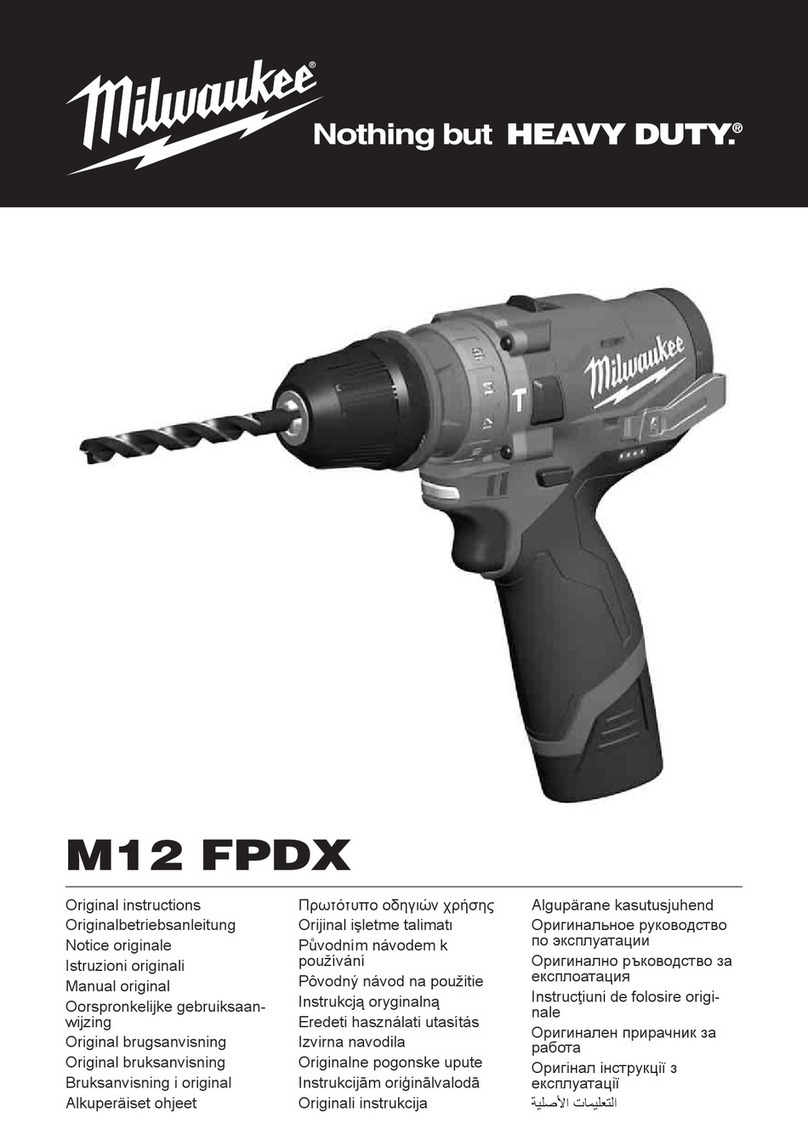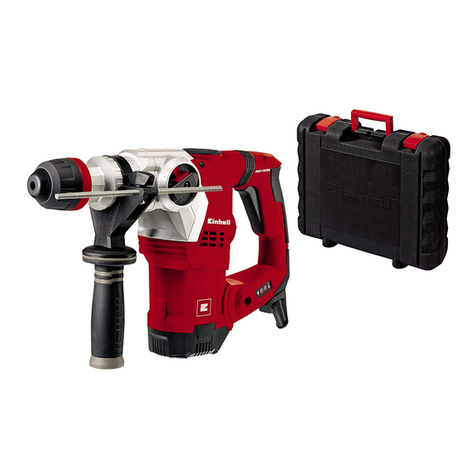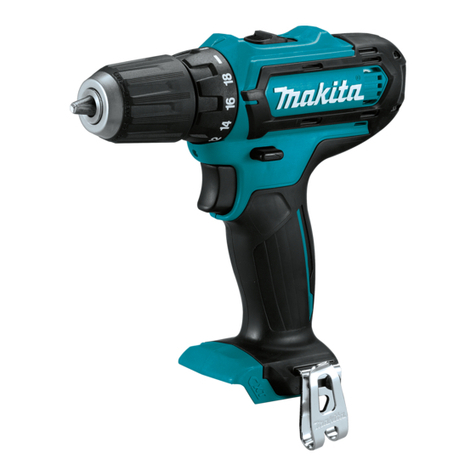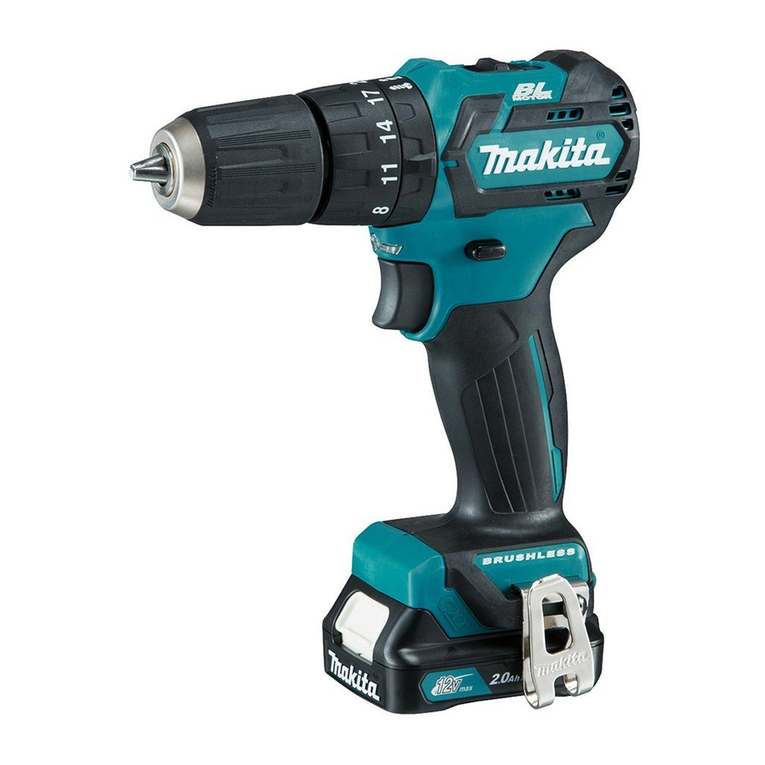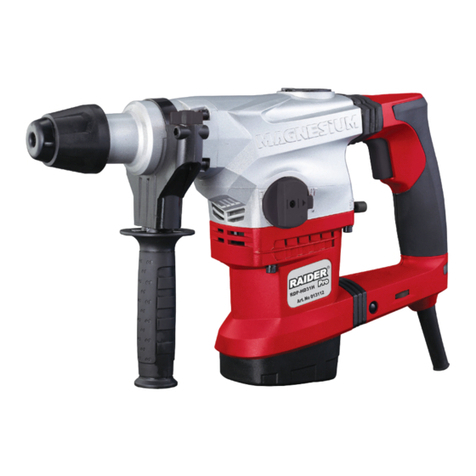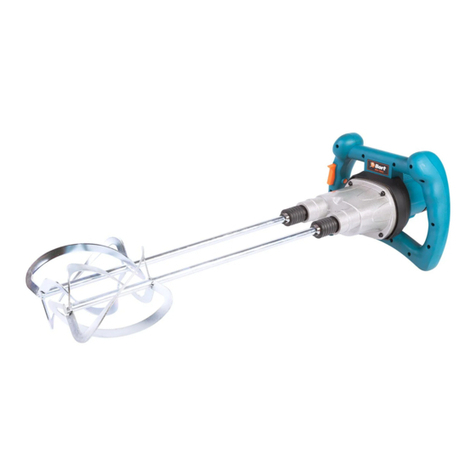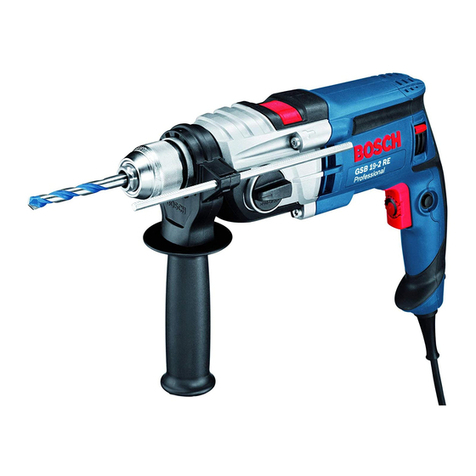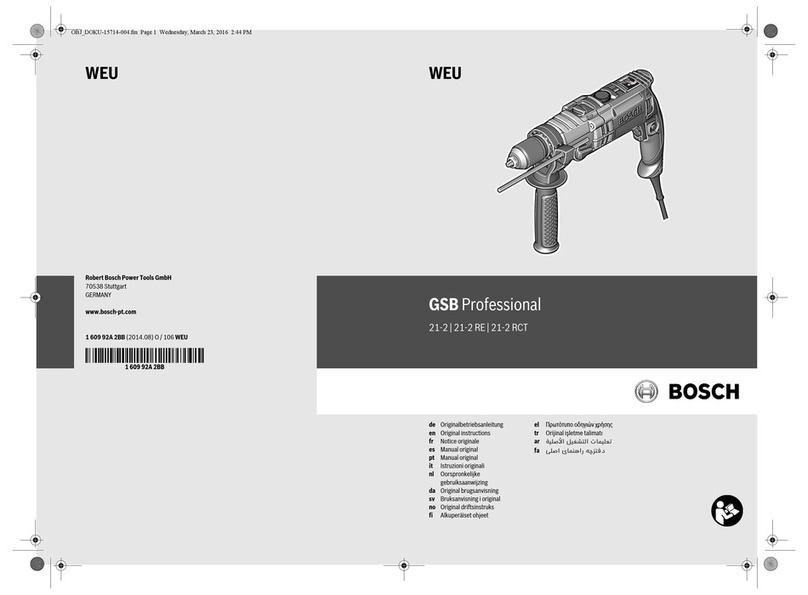-2-
(:=6,=0,>,10?D
00;B:=6,=0,.70,9,9/B07774?Cluttered
or dark areas invite accidents.
: 9:? :;0=,?0 ;:B0= ?::7> 49 0C;7:>4A0
,?8:>;30=0> >@.3 ,> 49 ?30 ;=0>09.0 :1
17,88,-70 74<@4/> 2,>0> := /@>? Power
tools create sparks which may ignite the dust
or fumes.
00; .347/=09 ,9/ -D>?,9/0=> ,B,D B3470
:;0=,?492 , ;:B0= ?::7 Distractions can
cause you to lose control.
70.?=4.,7>,10?D
":B0= ?::7 ;7@2> 8@>? 8,?.3 ?30 :@?70?
0A0=8:/41D?30;7@249,9DB,D:9:?
@>0 ,9D ,/,;?0= ;7@2> B4?3 0,=?30/
2=:@9/0/ ;:B0= ?::7> Unmodified plugs
and matching outlets will reduce risk of electric
shock.
A:4/-:/D.:9?,.?B4?30,=?30/:=2=:@9/0/
>@=1,.0> >@.3 ,> ;4;0> =,/4,?:=> =,920>
,9/=01=420=,?:=>There is an increased risk
of electric shock if your body is earthed or
grounded.
: 9:? 0C;:>0 ;:B0= ?::7> ?: =,49 := B0?
.:9/4?4:9> Water entering a power tool will
increase the risk of electric shock.
:9:?,-@>0?30.:=/ 0A0=@>0?30.:=/
1:=.,==D492;@77492:=@9;7@22492?30;:B0=
?::700;.:=/,B,D1=:830,?:47>3,=;
0/20>:=8:A492;,=?>Damaged or entangled
cords increase the risk of electric shock.
(309:;0=,?492,;:B0=?::7 :@?/::=>
@>0,90C?09>4:9.:=/>@4?,-701:=:@?/::=
@>0 Use of a cord suitable for outdoor use
reduces the risk of electric shock.
1:;0=,?492?30;:B0=?::749/,8;7:.,?4:9>
4>@9,A:4/,-70@>0,=:@9/,@7?4=.@4?
9?0==@;?0=;=:?0.?0/>@;;7DUse of
an GFCI reduce the risk of electric shock.
"0=>:9,7>,10?D
$?,D ,70=? B,?.3 B3,? D:@ ,=0 /:492 ,9/
@>0 .:88:9 >09>0 B309 :;0=,?492 ,
;:B0=?::7:9:?@>0,;:B0=?::7B3470
D:@,=0?4=0/:=@9/0=?304917@09.0:1/=@2>
,7.:3:7:=80/4.,?4:9A moment of inattention
while operating power tools may result in
serious personal injury.
&>0;0=>:9,7;=:?0.?4A00<@4;809?7B,D>
B0,= 0D0 ;=:?0.?4:9 Protective equipment
such as dust mask, non-skid safety shoes, hard
hat, or hearing protection used for appropriate
conditions will reduce personal injuries.
"=0A09?@949?09?4:9,7 >?,=?4929>@=0?30
>B4?.3 4> 49 ?30 :11;:>4?4:9 -01:=0
.:990.?492?:;:B0=>:@=.0,9/:=-,??0=D
;,.6;4.6492@; :=.,==D492 ?30 ?::7
Carrying power tools with your finger on the
switch or energizing power tools that have the
switch on invites accidents.
#08:A0,9D,/5@>?49260D:=B=09.3-01:=0
?@=9492 ?30 ;:B0= ?::7 :9 A wrench or a
key left attached to a rotating part of the
power tool may result in personal injury.
:9:?:A0==0,.300;;=:;0=1::?492,9/
-,7,9.0 ,? ,77 ?480> This enables better
control of the power tool in unexpected
situations.
=0>>;=:;0=7D:9:?B0,=7::>0.7:?3492
:= 50B07=D 00; D:@= 3,4= .7:?3492 ,9/
27:A0> ,B,D 1=:8 8:A492 ;,=?> oose
clothes, jewelry or long hair can be caught in
moving parts.
1/0A4.0>,=0;=:A4/0/1:=?30.:990.?4:9
:1/@>?0C?=,.?4:9,9/.:770.?4:91,.474?40>
09>@=0 ?30>0 ,=0 .:990.?0/ ,9/ ;=:;0=7D
@>0/Use of dust collection can reduce dust-
related hazards.
":B0=?::7@>0,9/.,=0
: 9:? 1:=.0 ?30 ;:B0= ?::7 &>0 ?30
.:==0.?;:B0= ?::71:=D:@=,;;74.,?4:9The
correct power tool will do the job better and
safer at the rate for which it was designed.
:9:?@>0?30;:B0=?::741?30>B4?.3/:0>
9:? ?@=9 4? :9 ,9/ :11 Any power tool that
cannot be controlled with the switch is
dangerous and must be repaired.
#0,/,77>,10?D B,=9492> ,9/ 49>?=@.?4:9> Failure to follow the warnings
and instructions may result in electric shock, fire and/or serious injury.
$'(# $ $%#&%! $!#&%&###
The term “power tool” in all of the warnings refers to your mains-operated (corded) power tool
or battery-operated (cordless) power tool.
!
ARNING
090=,7":B0=%::7$,10?D(,=9492>
BM 1619X03886 07-09:BM 1619X03886 07-09 7/23/09 10:54 AM Page 2
